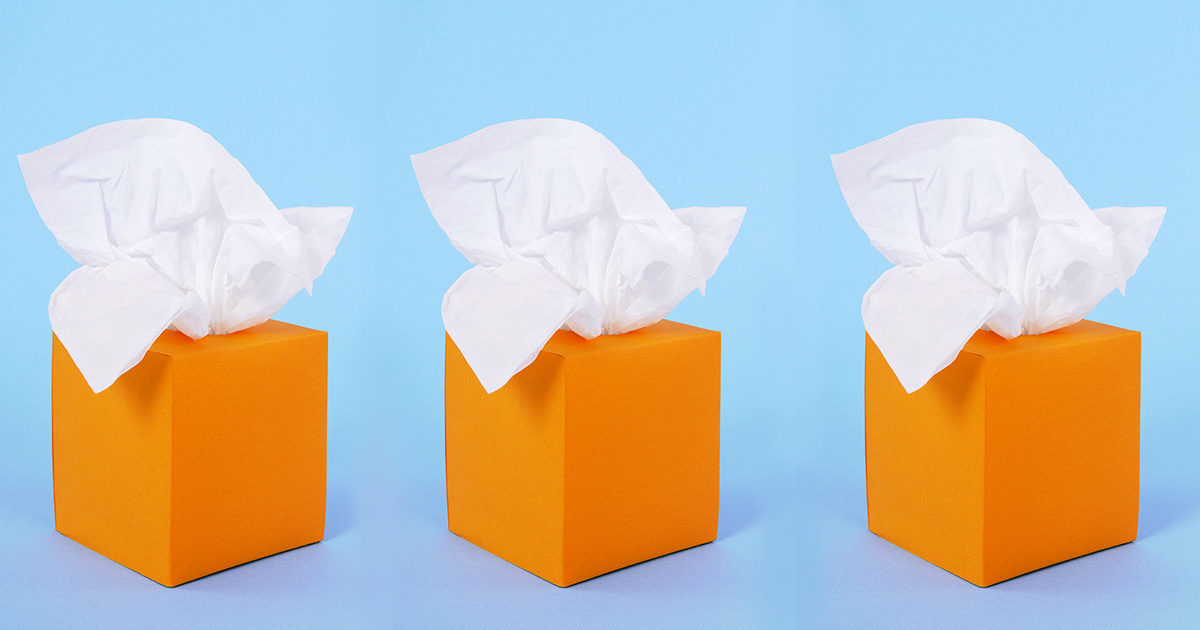Austin Allergy Madness
How to survive and thrive during seasonal allergies
Reviewed by: UT Health Austin Primary Care Physicians
Written by: Lauryn Feil

Our love for Central Texas is constantly being tested by seasonal allergies. Summertime grass and fall ragweed join forces with winter cedar and spring oak pollen, challenging us to remain looking and feeling our best all year round. Not to mention the lovely molds and dust that are always present in the air—irritating on more than one level. The sacrifices we Austinites have to make to enjoy the live music capital of the world are immense, but alas, I think we can all agree, worth it. 10-30% of the U.S. population suffers from seasonal allergies, but you can get ahead of the game by knowing when allergens are high and the best ways to combat them.
Know the Seasons, Know the Triggers
Summer
The biggest summertime villain here in Texas is…GRASS. Grass is literally everywhere. With breezy summer nights and buzzing lawnmowers during the day, there is always plenty of grass pollen swirling in the air. During particularly rainy or humid summers, mold spore counts also spike during the summertime. So, unless you breathe something other than air (fire?), it’s essentially impossible to avoid these allergens altogether.
Fall
Ragweed is the primary allergy culprit during the fall, and it’s as nasty as it sounds. Although most grains fall close to its source, this common roadside weed can spread up to 1 billion pollen grains over 400 miles out to sea and two miles upward in the atmosphere. It also sneakily releases its pollen in the evening. If you’re relaxing out on the patio, enjoying a nice fall night and you feel an itchy or runny nose come on all of a sudden or begin to experience red, watery eyes, you can likely blame our allergy adversary, the ragweed.
Winter
Ah yes, the infamous Austin cedar season. If you just moved here, you’ve likely heard your more seasoned Austinites complain about the cedar fever that hits like a <strike>snow</strike> field plow every winter. There is a deep-rooted rage for cedar in our community, because it can produce allergy symptoms that honestly rival the flu. On cool, sunny days the Ashe juniper trees (Juniperus ashei), or whatever you call them, explode with pollen, sending misery-causing clouds of chaos traveling over 300 miles through our beautiful city. It takes the number one spot on our list of formidable allergy foes.
Spring
Budding trees and nature’s return from the dead of winter make spring the most common time for allergies in the country. You may be familiar with that yellow stuff that coats your cars, windows, houses, and everything in between. You can thank our oak trees for that. While they are just trying to spread some love, they can take your health down in the process. Ash, elm, pecan, and cottonwood trees also produce abundant amounts of pollen in the spring, leaving us wondering if it’s a dust storm or a pollen storm—both gross.
Seasonal Allergy Symptoms
Seasonal allergies can produce symptoms that are often mistaken for viral symptoms similar to a cold or the flu, but the treatment for allergies differs. If you are experiencing the symptoms below, it’s likely you’re suffering from seasonal allergies, which can happen even if you’ve never experienced allergies before.
Common seasonal allergy symptoms include:
- Aggravated asthma symptoms
- Headaches
- Itchy eyes, nose, mouth, throat, or ears
- Increased wheezing or coughing
- Nasal congestion
- Red, swollen, watery, or generally irritated eyes
- Runny nose
- Sneezing
How to Survive and Thrive During the Austin Allergy Madness
It’s worth noting, in nature’s defense, that pollen is not actually trying to harm you. In fact, it’s harmless. However, when we breathe it in, our bodies are tricked into thinking the pollen is a foreign invader, causing our body to produces antibodies in response. So basically, our own defense system is what causes our symptoms…a unique human flaw. Lucky for us, over the years, scientists and doctors have discovered the best ways to treat allergies, so we can go about our lives and enjoy nature’s gifts instead of loathing them. To ease your suffering during whatever season(s) (hopefully not plural!) triggers your allergies, begin treatment 2-4 weeks prior to when heightened levels of pollen are expected to be in the air.
Potential treatment options include:
- Taking combination medications (taking a decongestant and an antihistamine together is how the real magic happens)
- Taking decongestants
- Taking over-the-counter oral antihistamines
- Using steroid nasal sprays
- Using saline sinus wash
- Monitoring the pollen and mold counts (If a spike occurs, take some meds and stay indoors; you can check the daily allergy report here.)
- Remaining indoors on dry, windy days when pollen is most likely to be in the air
When home remedies aren’t enough, visit with your doctor. Allergy shots may also be an option if other treatments prove ineffective.
Download our seasonal allergy guide.
<br>We bid you good luck this allergy season, may the antihistamine force be with you.
For more information or to schedule an appointment with UT Health Austin’s Walk-In Clinic, call 1-833-UT-CARES (1-833-882-2737) or visit here.